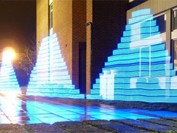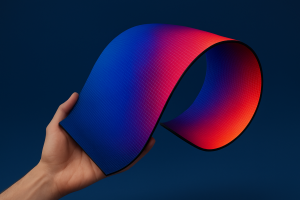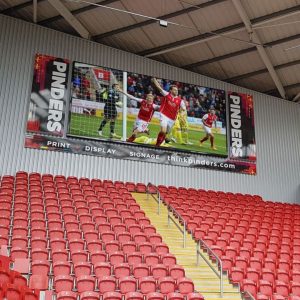Innovative display solution created at Bristol University
 While we already have access to LED displays which are capable of showcasing 3D content via stereoscopic technology, a new project conducted by researchers at the University of Bristol, has shown that a whole new approach to three dimensional imaging could be available in the future.
While we already have access to LED displays which are capable of showcasing 3D content via stereoscopic technology, a new project conducted by researchers at the University of Bristol, has shown that a whole new approach to three dimensional imaging could be available in the future.
The science team has created a prototype device, which features nine individual displays integrated together in a square panel, which is a relatively traditional arrangement.
However, what sets this device apart from other modular screens, is that each is mounted on a pivot which allows it to move independently of its neighbours.
The idea is that the displays will tilt in order to represent the nature of the images which are being displayed on them.
This is a very primitive incarnation of the idea, but it points towards a future in which displays are truly three dimensional, in that they can pop up out of the 2D plane to which they have traditionally been confined, allowing them to replicate in real time a wide variety of objects.
The researchers are particularly interested in the potential application of this technology when it comes to mapping. Being able to bring a whole city to life, complete with towering buildings and intricate alleys, all using a display, would definitely change the way we perceive navigation.
Ultimately, it is hoped that this kind of 3D display technology will be able to integrate with mobile devices and computers, perhaps giving us an idea of what tablets like the iPad range will look like in a couple of decades, if indeed this form factor is still dominant.
A variety of avenues seem open to us when it comes to representing 3D images on what is a traditionally 2D medium, showing exciting promise of what is to come.
I would recommend LED Synergy to anyone considering purchasing an LED sign. We have had so many compliments since it was installed and it has been a valuable asset.
Tom Hughes
OSI Food Solutions



